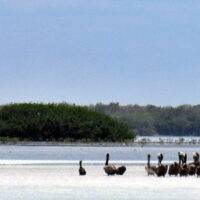Sierra Gorda Biosphere Reserve – Ultimate Travel Guide

Last Updated on October 7, 2023
Exploring the Sierra Gorda Biosphere Reserve in Queretaro is a unique experience. The spectacular scenery, the stunning landscape, and the lush vegetation make it one of the best destinations in Mexico for nature lovers and outdoor enthusiasts. Canyons, waterfalls, and UNESCO sites await only to wake up the adventurer within you.
Most sights are pretty remote and are hard to reach via public transportation so I recommend renting a car to fully enjoy all that the Sierra Gorda has to offer. Read on to discover all the best places to visit there, the recommended itinerary, and useful travel tips.
Disclaimer: This post contains affiliate links, which means that if you click on any links and make a purchase, I’ll get a small commission, at no cost to you.
Must-see places in Queretaro’s Sierra Gorda Biosphere Reserve
San Joaquin

San Joaquin is one of the many Pueblos Magicos (magical town) in Queretaro state. It’s also the door to the Sierra Gorda Biosphere Reserve. There a lot of nature-related activities to do there. You could trek to the Ranas Archaeological Zone, the ruins of an important Prehispanic city (open every day from 9 to 5 – entrance fee: 45 pesos). You can also drive to it, but it’s only a 45-minute walk from San Joaquin city center.
You shouldn’t miss either Los Herrera Cave (30-minute walk), a stunning cave, full of rock formations. Nearby, if you have a car, you can go to the Maravillas Waterfall, a nice place if you like nature and trekking.
Cañon del Paraiso (Paradise Canyon)

The Cañon del Paraiso is an incredible place to visit inside the Sierra Gorda Biosphere Reserve. Surrounded by high cliffs made of black marble, walking along the river, you’re in for a great adventure. You can drive almost all the way there if you have a 4-wheeler but it’s also nice to trek from Adjuntas village. Ask around for directions.
This area is also a great place to go mountain-biking.
In the village, you’ll find everything you need, but pack snacks and plenty of water for when you’re there. Bring your swimsuit also and water shoes (you have to walk in the river towards the end).
Pinal de Amoles
Pinal de Amoles is a small village and a convenient location to stay at to explore parts of the Sierra Gorda. Located along the main road and in one of the highest points, Pinal is often foggy and cold, especially in winter.
Cuatro Palos Viewpoint

Cuatro Palos is one of the most visited places in the Sierra Gorda. It’s one of the biosphere’s reserve highest point from which you’ll get an amazing view over the whole region. You can drive almost all the way to the top but you’ll have to walk for about 20 minutes to reach the viewpoint.
Take the climate into consideration before going, if it’s cloudy or foggy, you won’t see anything. Most people go there for sunrise and stay awhile, waiting for the clouds to disappear. You can also camp there.
How to reach Cuatro Palos without a car: take the bus on the main road and get down at the intersection, from there you can either hitchhike or walk the 5 kilometers (3 miles).
Cuatro Palos entrance fee: 20 pesos
Puente de Dios
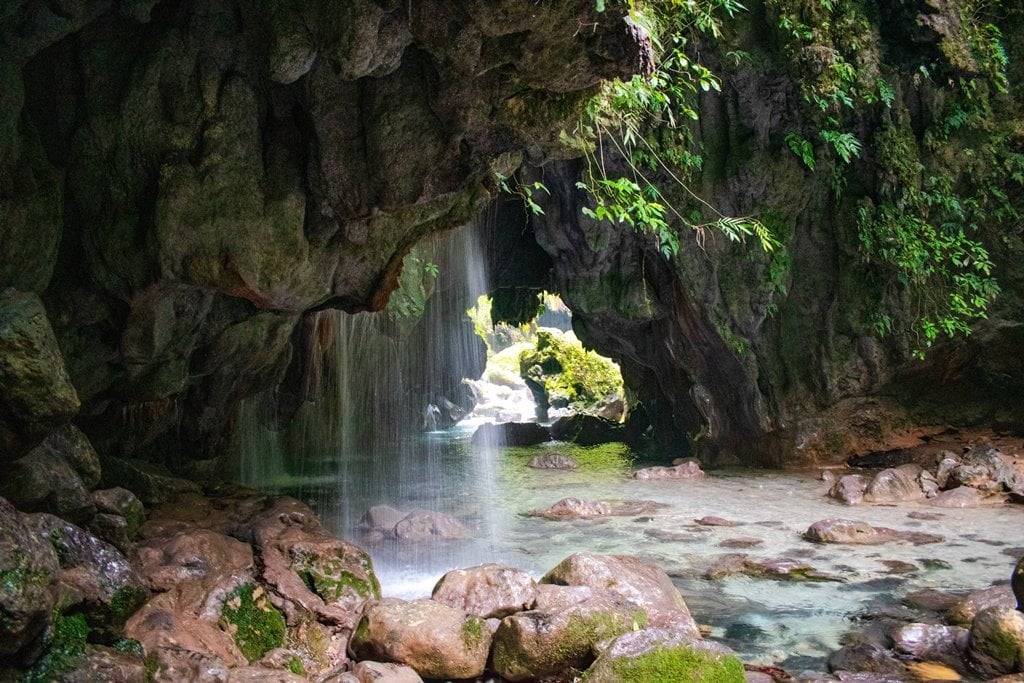
Puente de Dios (God’s Bridge) is one of the Sierra Gorda’s most beautiful sights. Walking along the river, you’ll pass by waterfalls, caves and rock formations. You can swim when you reach the end of the trail, the water is fresh and the color is stunning.
Again, take the climate into consideration. The day I went, it had been raining a lot the last few days, so the river was flooded and you couldn’t go all the way. Also, bring water clothes, water shoes, and a dry bag.
There are several places called Puente de Dios in the area (and in Mexico in general), this one is the Puente de Dios in Pinal de Amoles Municipality.
There you’ll find several cheap food stands and small shops, bathrooms and showers. There’s also a campsite and a hotel.
How to get to Puente de Dios in Pinal de Amoles without a car: you can take the bus on the main road to the intersection then either hitchhike or walk the 4 kilometers.
Puente de Dios entrance fee: 75 pesos
El Chuveje Waterfall
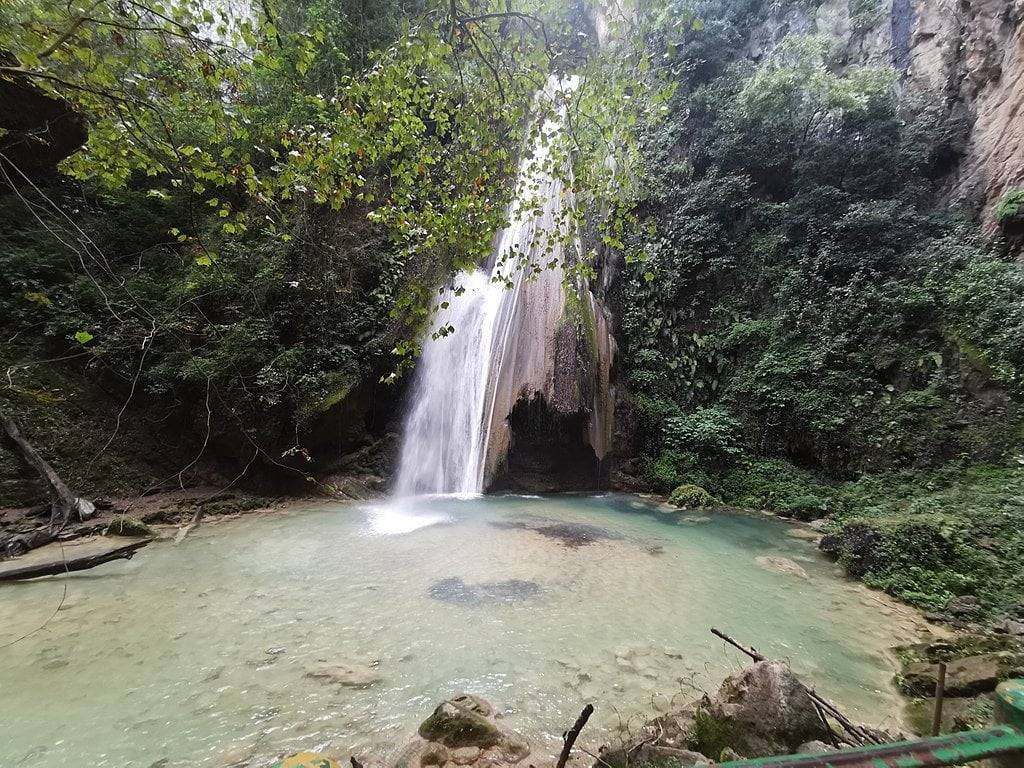
Near the Puente de Dios, you can visit this beautiful waterfall. This 30-meters high fall is less than 3 kilometers away from the main road so you can easily walk to it. It’s a great place to swim and enjoy the Sierra Gorda Biosphere Reserve’s pristine waters.
El Chuveje Waterfall entrance fee: 20 pesos
Sotano del Barro

The Sotano del Barro is so remote that the town it’s in is not on Google Maps. Sotanos are a type of cave, basically, a huge vertical hole where birds make their home. You’ll need to get there before sunrise or around sunset. That’s when you’ll see hundreds of birds, either heading out for the day or coming back to sleep. This is an incredible experience.
This one is hard to reach, even with your own vehicle. If you’re heading to the Huasteca Potosina after, you can skip this and visit the Sotano de las Golondrinas, much easier to access.
Jalpan de Serra
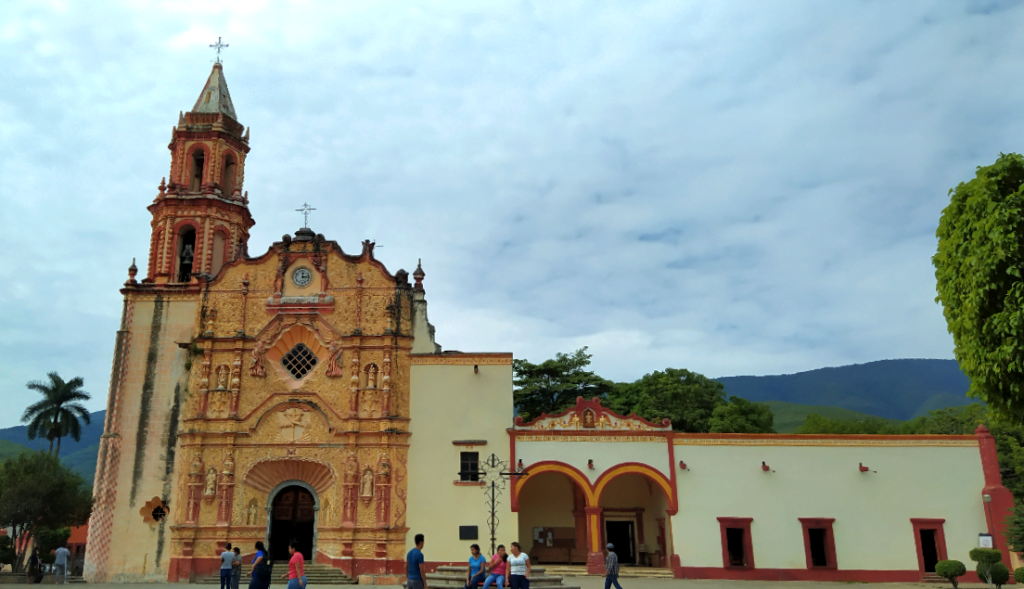
Jalpan is a popular town in the Sierra Gorda. Located along the main road, it’s the perfect place to base yourself during your trip. In Jalpan, you’ll find one of the UNESCO Missions and you can easily reach the other places listed from there. There are also a few places nearby to swim depending on rainfalls.
Conca

Conca is a small isolated village where you’ll find a few places to swim and one of the UNESCO Mission as well. The most popular place for swimming is at the Nacimiento de Conca, where the water’s color is stunning. Within the same compound, you’ll find the famous Millennium Tree. Another place to swim is down at the river, where the waterfall is (“Cascada Conca” in Google Maps). The water is clean and refreshing, it’s better to swim at the waterfall as the banks of the river are usually super muddy.
On your way to Conca, you can stop at Las Adjuntas, where two rivers meet, one cold and one hot, making the water temperature perfect. There are a few campsites around if you want to spend the night.
How to reach Conca without a car: from Jalpan, take a bus at the terminal. There’s one bus every hour going directly to Conca.
Visiting the Sierra Gorda’s Franciscan Missions

Built during the 18th century, these five Franciscan missions are UNESCO World Heritage Sites and played an important role in the region’s evangelization. The architecture as well as their history, make these places worth visiting.
- Santiago de Jalpan, in Jalpan de Serra (the first one to have been built);
- Nuestra Señora de la Luz de Tancoyol, in Tancoyol (hard to reach without a car);
- Santa Maria del Agua de Landa, in Landa de Matamoros (reachable by bus);
- San Francisco del Valle de Tilaco, in Tilaco (also hard to reach without a car);
- San Miguel Concá, in Conca (reachable by bus);
Useful things to know before visiting the Sierra Gorda Biosphere Reserve
- The easiest way to visit the Sierra Gorda is by renting a car, alternatively, you can book tours to most of the destinations listed above or you can do a mix of buses and hitchhiking;
- If you rent a car, pick a 4-wheeler, most roads are dirt roads;
- I would say it’s safe to hitchhike, I did it as a solo female traveler and it was fine. When you go to the attractions, there’s only this at the end of the road so people driving by are mostly families on vacations/weekends.
- Even with a car, you’ll need to walk a bit to reach the points of interest, usually around 30 minutes. Pack good shoes.
- The way places look can hugely change with the weather, for instance, the water will be muddy and not crystal clear if it has been raining a lot, or during the dry season, waterfalls can reduce to a trickle.
- The weather is usually cold during the night or when it’s cloudy, and hot during the day. Pack a good jacket and a pair of pants, but also clothes for warm weather, without forgetting sunscreen (biodegradable so you don’t contaminate the water) and a hat or cap.
- As most of the things to do in the Sierra Gorda are water activities, pack a GoPro or a waterproof case for your phone, water shoes, and a dry bag.
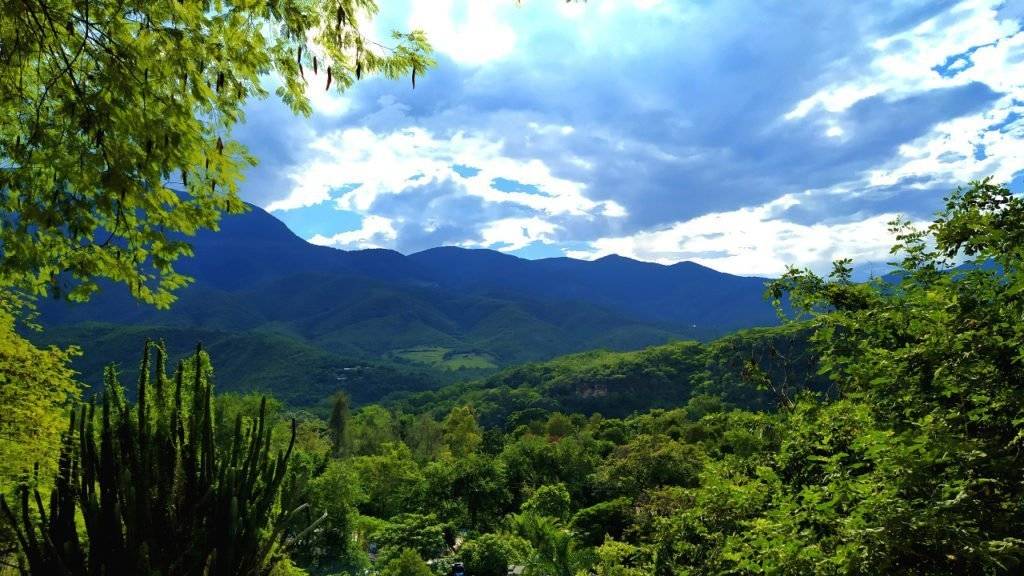
Sierra Gorda Biosphere Reserve itinerary
If you have a car, you can fit everything into 4D/4N nights as follows:
- Day 1: Leave early morning from Queretaro, heading to Joaquin, spend the day visiting the waterfall, the cave, and the ruins. Spend your first night there.
- Day 2: visit the Cañon del Paraiso, spend this night and the next in Pinal (check accommodations).
- Day 3: watch the sunrise from 4 Palos, then visit the Chujeve Waterfall and the Puente de Dios.
- Day 4: watch the sunrise at the Sotano del Barro then head to Conca. Spend the night in Jalpan (check accommodations), where you can visit the mission.
With public transportation, it will depend if you’re lucky or not, as most of these places are only reachable via hitchhiking. If you don’t feel comfortable hitchhiking, what you can do is a night in San Joaquin (visit the cave and the ruins) then base yourself in Jalpan, from there you can visit Conca, and if you don’t mind walking, Puente de Dios.
If you have a few more days, you can continue your road trip into the Huasteca Potosina, one of Mexico’s most stunning region.
Related articles to help you plan your trip to Mexico:
- Best destinations you can’t miss in Mexico
- 38 epic places to visit in Guanajuato
- Mexico City 4-day ultimate itinerary
- Stunning waterfalls in San Luis Potosi
Like it? Save it for later:






